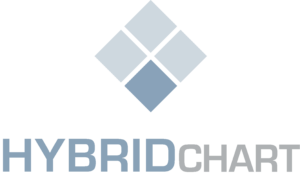Uncertainty has become the new reality. America and the world are struggling to cope with the impact of an infectious pandemic. All aspects of normal life have been affected, forcing us to take hard looks at behaviors that were previously felt to be innocuous.
As a practicing physician, I recognize the challenge of providing care for my patients in these disrupted times. I need to protect my patients, my staff, my partners, my family. My partners and I are forced to look with a critical eye at the entire workflow of outpatient and inpatient medicine. While our perspective in the past was rooted in convenience and historical practice, we are now evaluating the potential infectious risks. This pandemic has forced us to rethink everything.
The outpatient world has been turned on its head. Our office has changed protocols for signing in patients, who now get temperature checks and green stickers to reassure everyone that screening for infection has occurred. Spouses and friends who are accompanying patients are now asked to remain outside of the office, with the intent of keeping the waiting room volume at a minimum, In fact, if the waiting room occupancy gets too high, we are asking patients to walk around outside or wait in their car, and we will text/call when we are ready to room them. We are now paying attention to door handles, pens used to fill out forms in the waiting room – anything being touched by multiple people. Like I said, every little step in the workflow is now being examined with scrutiny.
I decided to leave my suit pants and shirts in the closet, in exchange for scrubs, which are easy to wash. I even have a makeshift changing station in my garage so that my work clothes and shoes do not enter my house. Speaking of shoes, I am now sporting my comfortable pair of Hoka sneakers, which match perfectly with my scrubs (fashion in the apocalypse is still important). Most importantly, my wife and kids have some reassurance that I will not be tracking infection into our last area of refuge.
We have introduced a telemedicine solution. This is something that has been pondered in the past, but current circumstances pushed this decision to the forefront. We are not yet sure how to make best use of this technology, but are now offering it to patients who would rather not come to a medical office and risk infection, or infecting their fellow patients. Adjusting our EHR and schedules to accommodate this new modality has been a challenge, but our staff are learning to pivot and adapt quickly.
In the hospital, hallways are quiet. Most of the visitors have been turned away. Rounding has some anxious moments. I find a computer workstation and take a deep breath as I touch the keyboard and mouse. I am constantly cleaning my hands with sanitizer, trying to minimize the inevitable contamination from frequently touched common surfaces. Surprisingly, patient encounters are the only part of my day that feel relatively unaffected. Bedside dialogue and physical exams bring back the calm sense of normalcy. Stepping out of the patient room, however, returns me to a world where I need to be aware of my every move. Handling hospital charges is a challenge. I am not comfortable with paper charge cards or demographic facesheets, and I am quite certain my billers are apprehensive about handling them. We happen to use a charge capture/collaboration software system to help with rounding. In the past this was viewed as a luxury, however it is now becoming clear that these systems could potentially mitigate risks in the workflow.
Most industries have seen employees forced to work from home to avoid crowded offices, and medical billers are no exception. Looking at the medical billing supply chain, many medical billers are no longer in their offices, but rather working from home. Getting charges to this dispersed workforce is only going to be possible electronically.
It is clear that the practice of medicine has been dramatically impacted by this pandemic, not only in our need to rapidly understand this novel coronavirus, but how to conduct operations without worsening the problem. I am deeply concerned for all those suffering from the effects of COVID-19. Overall, I have seen much more kindness than greed, as communities rise up to protect the vulnerable. As a medical provider, I stand alongside my colleagues dedicated to caring for the sick, and doing our part to ensure the safety of all caregivers.
Smarter Rounding and Workflow Software for Doctors
At HybridChart, we provide technology that connects your healthcare team, increases efficiencies, AND improves your bottom line. HybridChart’s cloud-based software adapts to your practice’s unique workflow and will improve your profitability and patient outcomes by utilizing our 5 features: census management, charge capture, secure messaging, discharge management, and data analytics.
NEVER miss another charge and get PAID for the work you do!
If you are interested in taking your medical practice to the next level and want to employ the best hospital charge capture practice available in the industry, come visit our website at www.hybridchart.com, or call us at 1-877-684-0608 for a demo today!
Know a practice that may benefit from HybridChart? Click here.





